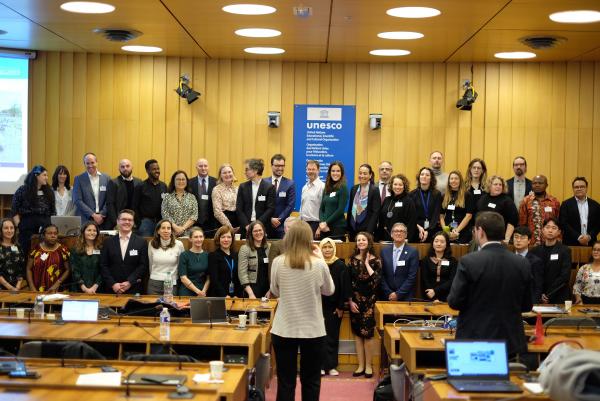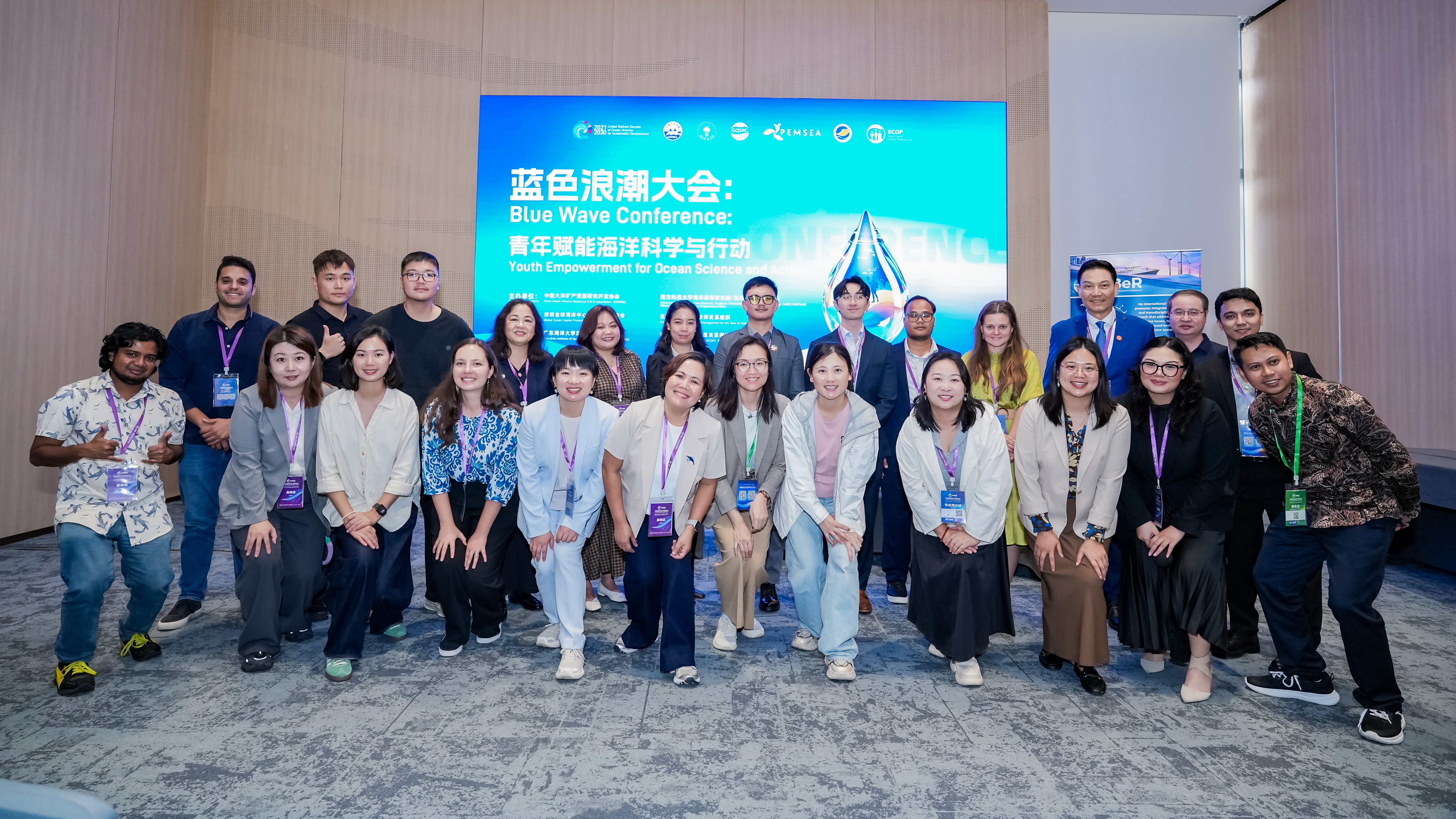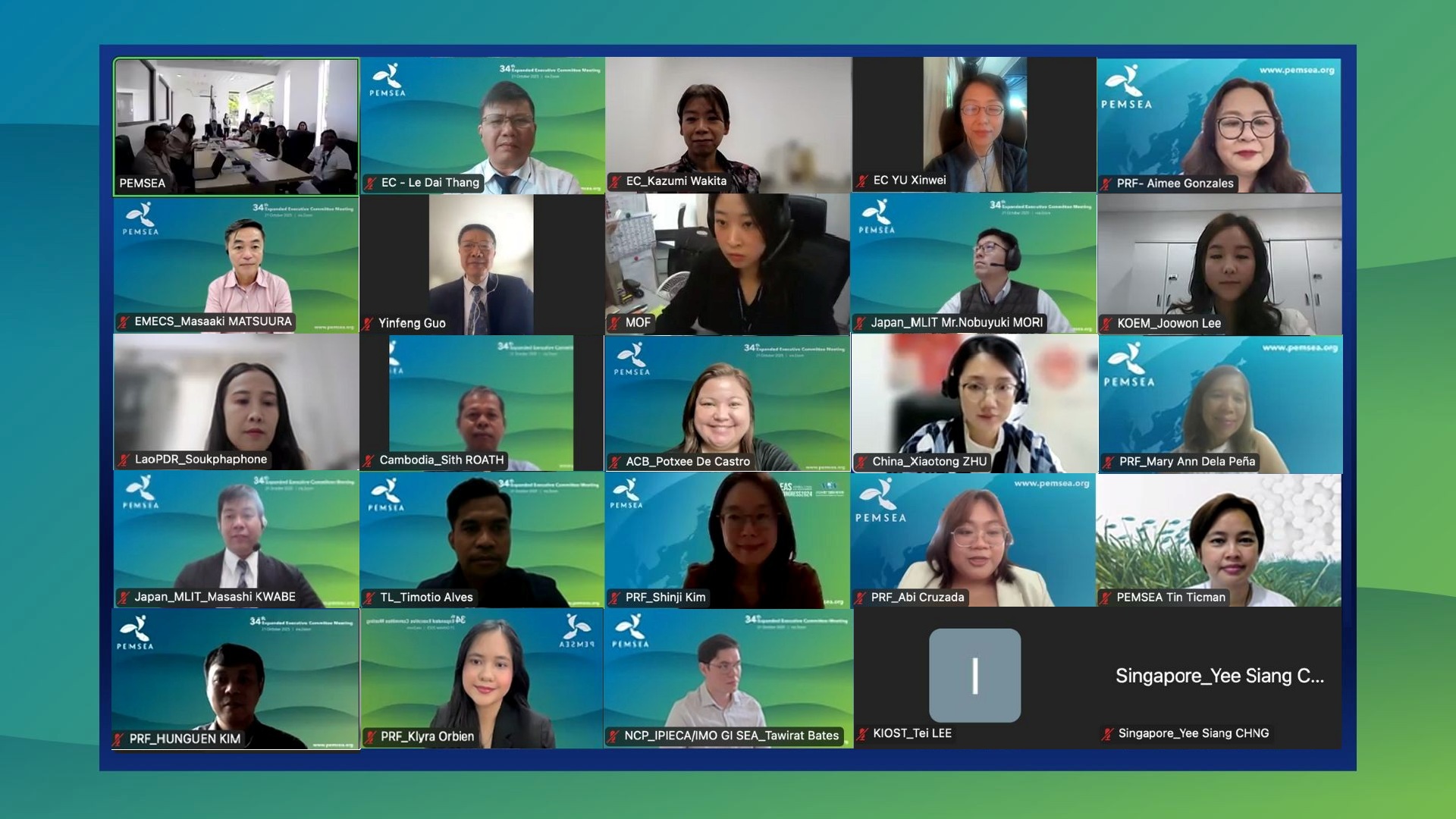PEMSEA expands participation on Blue Carbon
Wednesday, 29 March 2023

Blue carbon, the carbon stored in coastal and marine ecosystems such as mangroves, seagrasses, and tidal marshes, is becoming an increasingly important subject in global consideration of climate change mitigation and adaptation. These highly productive ecosystems sequester carbon from the atmosphere, making them important natural carbon sinks. These ecosystems also provide benefits for biodiversity, serving as habitats and nursery grounds for marine species, alongside ecosystem service benefits for local communities, including coastal protection, food security, and livelihood opportunities. Often threatened by human activity, protecting and restoring blue carbon ecosystems is critical for both mitigating climate change and supporting sustainable development.
PEMSEA recently participated in two meetings on Blue Carbon. The International Platform of Blue Carbon Annual Dialogue was held from 22-24 February 2023 at the UNESCO Headquarters in Paris. This event was co-hosted by the Australian Government Department of Climate Change, Energy, the Environment and Water (IPBC Coordinator), the Intergovernmental Oceanographic Commission (IOC) of UNESCO (IPBC Coordinator Support), and the French Ministry of Europe and Foreign Affairs. Around 80 participants from 21 countries attended the Dialogue either in-person or virtually.
The IPBC Dialogue provides a forum for discussions on Blue Carbon from global stakeholders, which feeds into the activities of the IPBC. This event had three thematic sessions corresponding to the three strategic Goals of the Partnership:
- Increased international commitments to protect coastal blue carbon ecosystems (mangroves, seagrasses and tidal/salt marshes).
- Improved national policies to conserve, protect and restore coastal blue carbon ecosystems.
- Accelerated on-the-ground implementation of blue carbon conservation, protection, and restoration activities.
More information is available on the IPBC website: https://bluecarbonpartnership.org/news/

The meeting saw discussion on the research of blue carbon, which has made huge strides over the last decade. With new information has come a clearer understanding of existing gaps in knowledge. Current gaps include mapping of seagrass habitats and the social science understanding of blue carbon ecosystem interaction with local communities. Conserving and restoring blue carbon ecosystems, especially at large scales, remain challenging. Such interventions demand significant human and financial resources, sustaining long-term technical capacity. Conservation remains easier than restoration, with restoration hampered by poor understanding of these ecosystems. Survival rates for restored ecosystems remain low.
Some blue carbon ecosystems have been included in various existing international mechanisms, such as UNESCO World Heritage Sites, UNESCO Biosphere Reserves, and Ramsar sites. For example, 78% of the total mangrove area in the Seychelles are part of UNESCO World Heritage Sites. Many are also included within national Marine Protected Areas (MPAs).
The economic potential of these ecosystems is becoming increasingly recognized through the mechanism of carbon markets. Correctly integrating these ecosystems, including through restoration projects, requires a detailed understanding of the carbon cycle within them. This should be a priority for the blue carbon community.
Blue carbon systems provide a very good example of how science and policy can make progress by mutually informing and supporting each other. Early blue carbon science – driven mainly by the Blue Carbon Initiative – has been crucial to integrating these ecosystems in national and international policymaking on climate change mitigation, whilst national and international policy processes play a key role in creating the enabling conditions for science to advance and be able to respond to societal needs.
In the East Asian Seas region, there have been a number of research papers on the blue carbon potential of mangroves, coral reefs, seagrass, seaweeds and now on tidal flats and eel grass. While no country in ASEAN has formally established a carbon market, both ROK and China have established carbon markets and emissions trading schemes, in 2015 and 2021 respectively. Japan has begun piloting its own system. These markets have lots of room to grow, and can play a key role in meeting existing carbon neutrality and reduction targets. Further progress will require sustained political will and partnerships with a number of stakeholders.
Blue carbon is becoming more understood from an ecosystem and macroeconomic perspective, but remains crucially understudied from local perspectives. How can a local community be effectively integrated into a national or regional carbon market? How can a carbon market relying on blue-carbon contributions possibly work without buy-in from the local communities around the blue carbon ecosystems? With blue carbon ecosystems being globally concentrated in southeast Asia, which contains almost a third of global coral reefs, mangroves, and seagrasses, such questions are crucial for ensuring and accelerating carbon-neutral development.
The other meeting on Blue Carbon attended by PEMSEA was organized the Comprehensive Assessment and Conservation of Blue Carbon Ecosystems and Their Services in the Coral Triangle (BlueCARES) Project, organized by the University of the Philippines Diliman and the Japan International Cooperation Agency (JICA). BlueCARES aims to implement Blue Carbon Ecosystems conservation actions through the development of the Blue Carbon Strategy.
From 15-16 March 2023, the project held a hybrid (in person and online) Blue Carbon Regional Symposium (BCRS): On the Blue Carbon Strategy at the Institute of Environmental Science & Meteorology (IESM), College of Science, UP Diliman. The objectives of BCRS were to present the blue carbon strategy developed by the Project for the Philippines and Indonesia and discuss how this can be effectively and sustainably implemented. The event brought together experts and practitioners in the Coral Triangle region and discussed current scientific, social, and policy issues, focusing on Blue Carbon developments in the context of climate change and tropical coastal conservation initiatives.
PEMSEA presented its work on Blue Carbon which focused on raising awareness, organizing learning events and promoting practical actions on the ground. It is also updating a regional publication entitled “Understanding Strategic Coastal Blue Carbon Opportunities in the East Asian Seas Region” which was produced in collaboration with GEF, UNDP, TNC, Silvestrum, IUCN and the Blue Carbon Initiative.
 Planting mangroves in Tangerang Regency, Indonesia.
Planting mangroves in Tangerang Regency, Indonesia.



